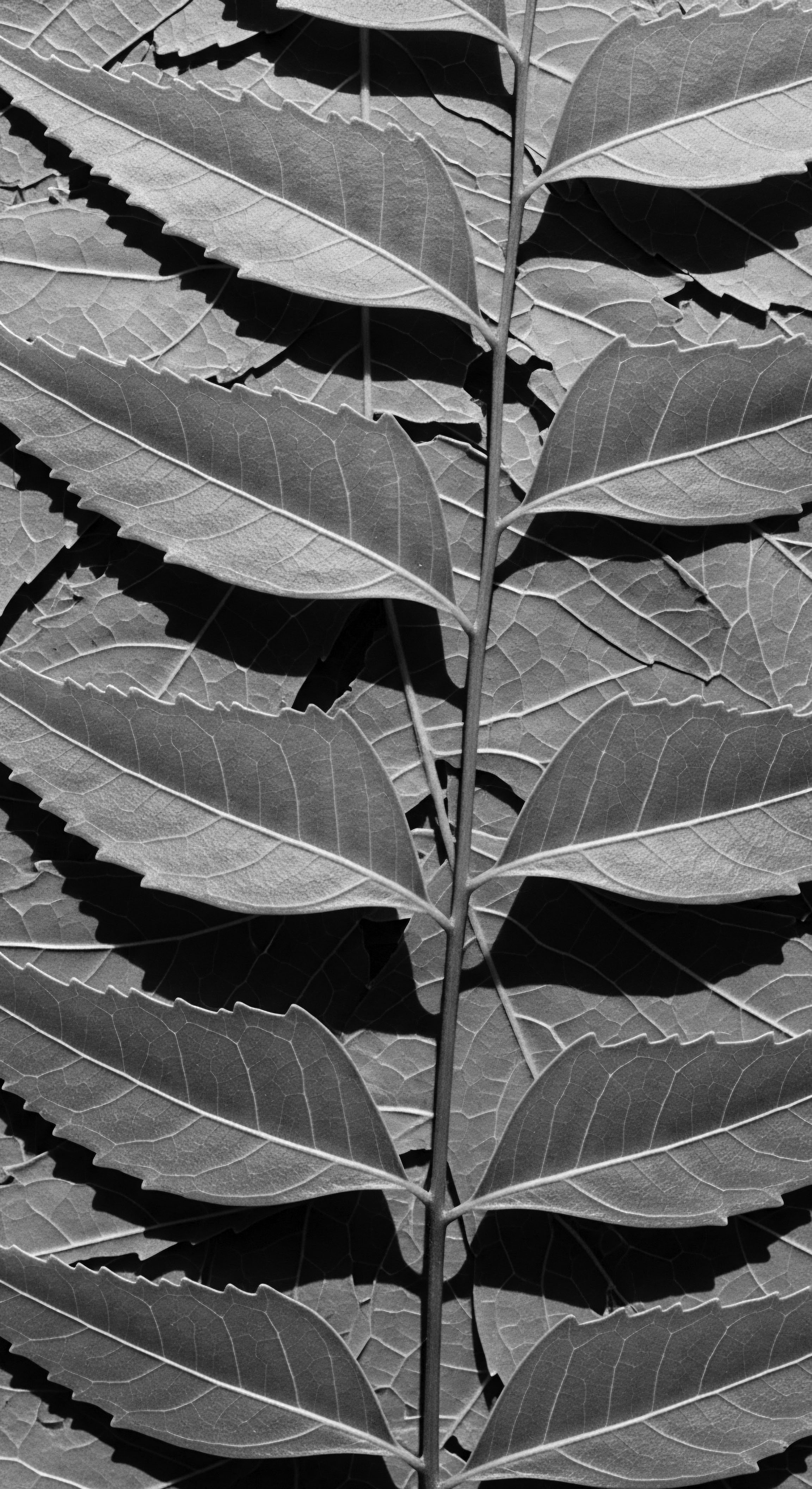
Roots
To truly comprehend the profound interplay between ancestral hair practices and the contemporary landscape of textured hair care, one must first listen to the whispers carried on the wind from generations past. This exploration is not a mere academic exercise; it is an invitation to reconnect with a living legacy, a sacred thread woven through the very fabric of identity for Black and mixed-race communities. Each curl, coil, and wave carries a story, a genetic memory of resilience and ingenious adaptation.
Understanding this heritage allows us to see modern formulations and techniques not as novel inventions, but as echoes, often refined, of wisdom passed down through time. It is a dialogue between the elemental biology of the strand and the ancient hands that understood its unique language long before microscopes revealed its intricate architecture.
The very essence of textured hair, with its distinctive helical structure and varying porosities, presented unique challenges and inspired equally unique solutions across diverse ancestral lands. The human hair follicle, a marvel of biological design, produces strands that, when tightly coiled or deeply waved, possess a different tensile strength and moisture retention capacity compared to straighter textures. This fundamental biological reality, though not articulated in scientific terms, was intimately known and honored by our forebears. Their practices, whether involving protective styles or the application of natural emollients, were direct responses to the hair’s inherent needs, long before the advent of laboratory analysis.
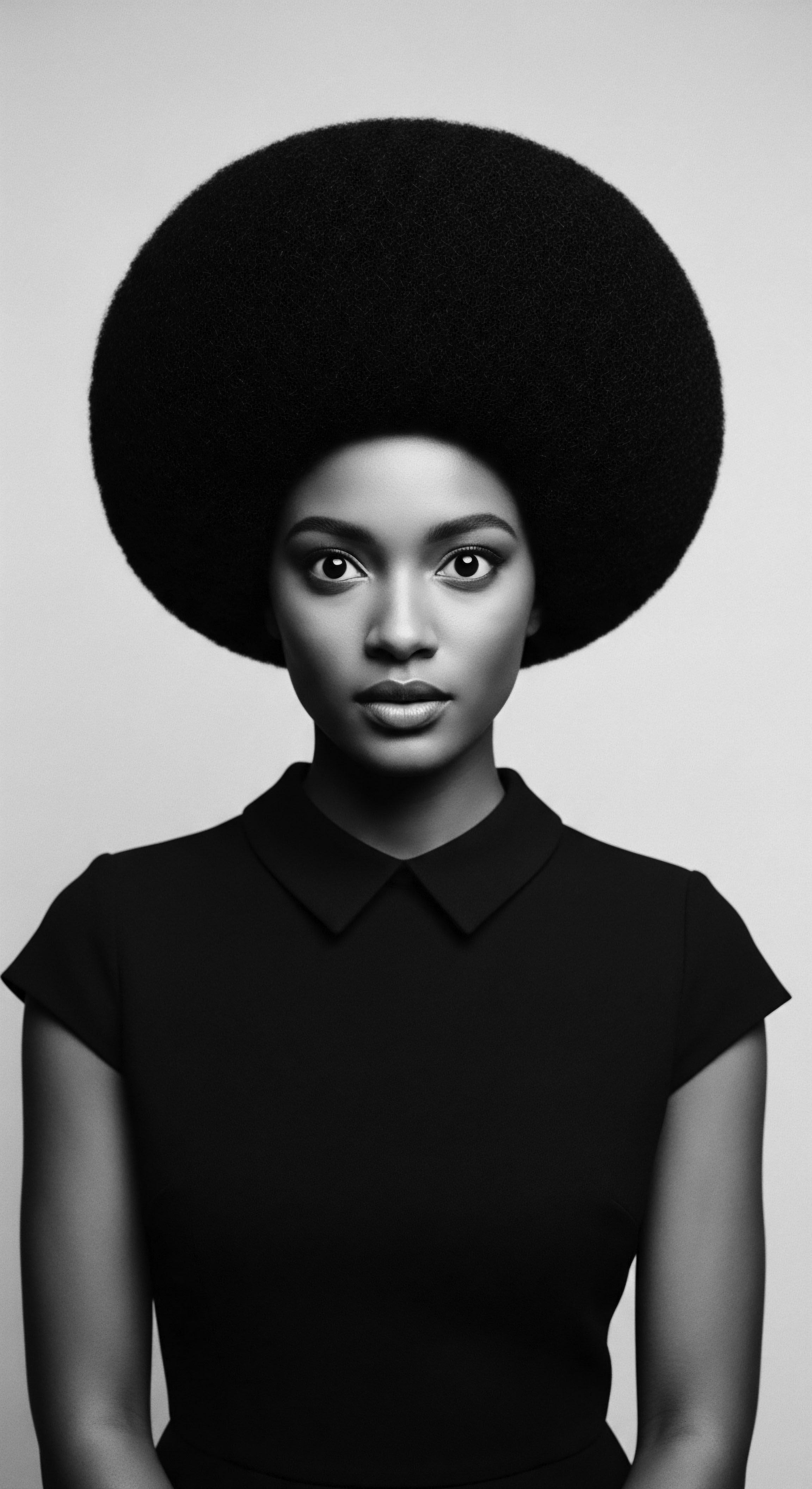
What Does the Biology of Coiled Hair Reveal About Ancient Care?
The anatomy of a coiled strand is a study in magnificent complexity. Unlike straight hair, which tends to be more cylindrical, textured hair often possesses an elliptical cross-section, and its growth pattern involves frequent turns and twists. These characteristics render it more prone to dryness, as the natural oils produced by the scalp, known as sebum, struggle to descend the winding shaft. Furthermore, the points where the hair shaft bends are areas of increased fragility, susceptible to breakage if not handled with tender care.
Ancestral wisdom, devoid of scientific instruments, intuitively grasped these vulnerabilities. They observed the hair’s propensity for dryness and its delicate nature, responding with remedies that focused on moisture retention and minimizing manipulation.
- Elliptical Cross-Section ❉ This shape contributes to the hair’s tendency to coil, creating natural points of vulnerability along the strand.
- Cuticle Layer ❉ In textured hair, the cuticle scales, which protect the inner cortex, may be less tightly packed or more prone to lifting, allowing moisture to escape more readily.
- Sebum Distribution ❉ The winding path of coiled hair hinders the even distribution of natural scalp oils, necessitating external moisture sources.
The nomenclature we use today to classify textured hair, while seemingly modern, often inadvertently overlooks the richness of ancestral descriptors. Systems like the Andre Walker typing, though widespread, offer a limited lens through which to view the vast spectrum of hair types. Historically, communities often used descriptive terms tied to visual appearance, feel, or even symbolic meaning.
For instance, in various West African cultures, hair textures were described in ways that connected them to natural phenomena or spiritual concepts, recognizing hair as a living, expressive part of the body. These were not mere classifications but acknowledgments of hair’s inherent spirit.
Ancestral understanding of textured hair’s elemental biology guided care practices long before modern scientific terminology existed.
The hair growth cycle, a continuous process of growth, rest, and shedding, was also implicitly understood. While not articulated as anagen, catagen, and telogen phases, traditional healers and hair custodians observed the cyclical nature of hair, recognizing periods of robustness and vulnerability. Dietary practices, often rich in nutrient-dense, locally sourced foods, inherently supported healthy hair growth, providing the necessary building blocks from within. The holistic influences on hair health, deeply rooted in ancestral wellness philosophies, saw the body as an interconnected system, where what nourished the spirit and the body also nourished the hair.
| Ancestral Observation Hair feels dry, needs constant re-moisturizing. |
| Modern Scientific Link Coiled hair's structure impedes sebum distribution, leading to increased transepidermal water loss. |
| Ancestral Observation Hair breaks easily if pulled or manipulated harshly. |
| Modern Scientific Link Points of curvature in coiled hair are structural weak spots, susceptible to mechanical stress. |
| Ancestral Observation Certain plants make hair soft and pliable. |
| Modern Scientific Link Botanical extracts contain humectants, emollients, and proteins that condition and strengthen hair. |
| Ancestral Observation The enduring wisdom of ancestral practices often aligns with contemporary scientific understanding of textured hair's unique properties. |
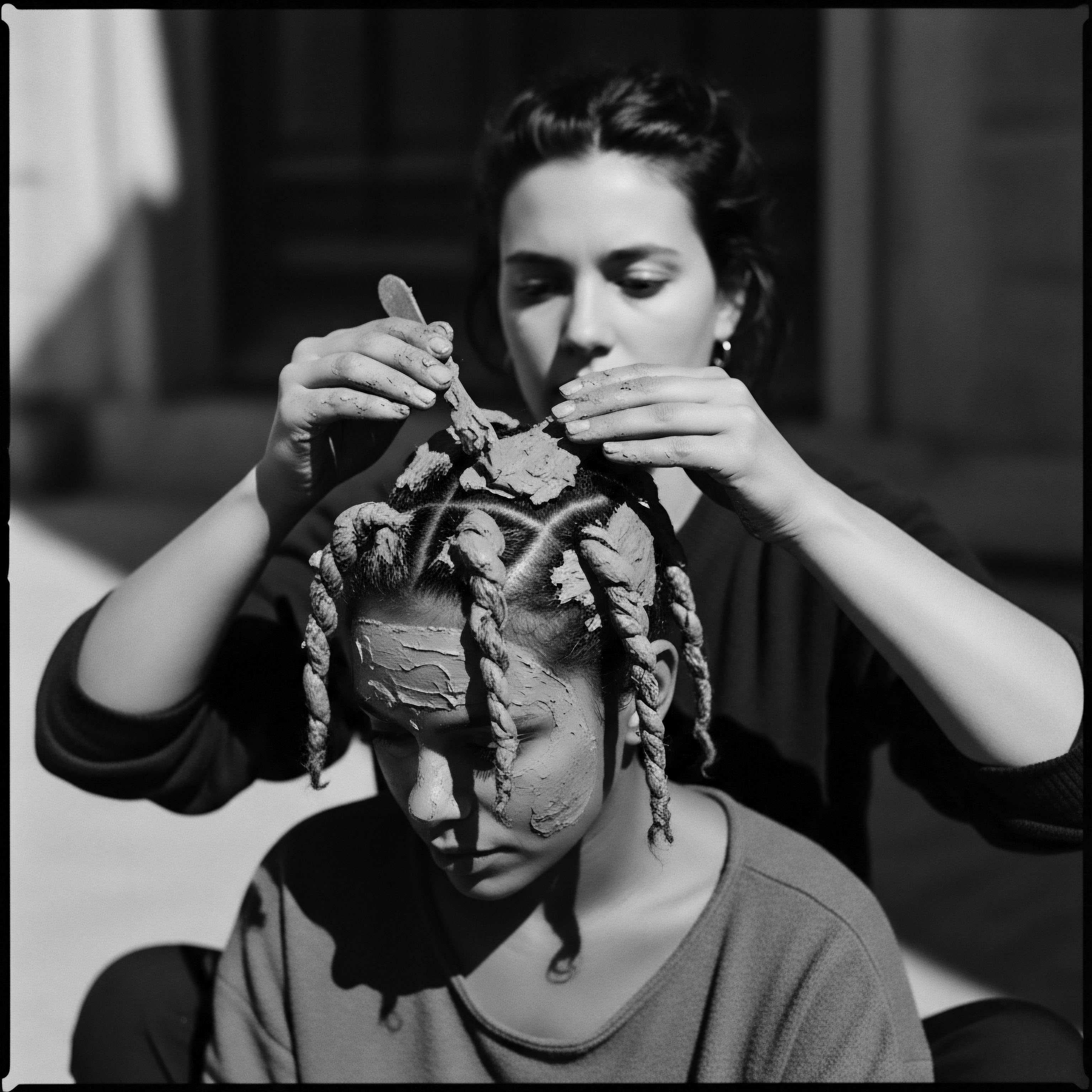
Ritual
Step into a space where the rhythm of care echoes across generations, where the act of tending to hair transcends mere grooming to become a sacred ritual. The query, “How do ancestral hair practices inform modern textured hair care?” invites us to witness a continuum, a living, breathing archive of techniques and tools that have shaped the very contours of Black and mixed-race hair styling. It is a journey from the foundational braid to the most intricate adornment, each movement carrying the weight of tradition and the ingenuity of adaptation. Here, we honor the hands that first sculpted coils and curls into expressions of identity, community, and resistance, recognizing that their artistry continues to guide our contemporary practices.
Protective styling, a cornerstone of textured hair care today, finds its profound origins in ancestral ingenuity. Styles like cornrows, braids, and twists were not merely aesthetic choices; they served vital practical purposes. In ancient African societies, these styles protected the hair from environmental elements—the sun’s intensity, the dust of arid lands, the wear of daily life. They also served as a means of maintaining hygiene and minimizing breakage, allowing hair to retain length and health.
Beyond utility, these styles communicated social status, tribal affiliation, marital status, and even spiritual beliefs. The very act of creating these styles often involved communal gatherings, reinforcing social bonds and transmitting cultural knowledge from elder to youth. This deep-seated understanding of hair as both a canvas and a shield is directly mirrored in the modern protective styling encyclopedia.
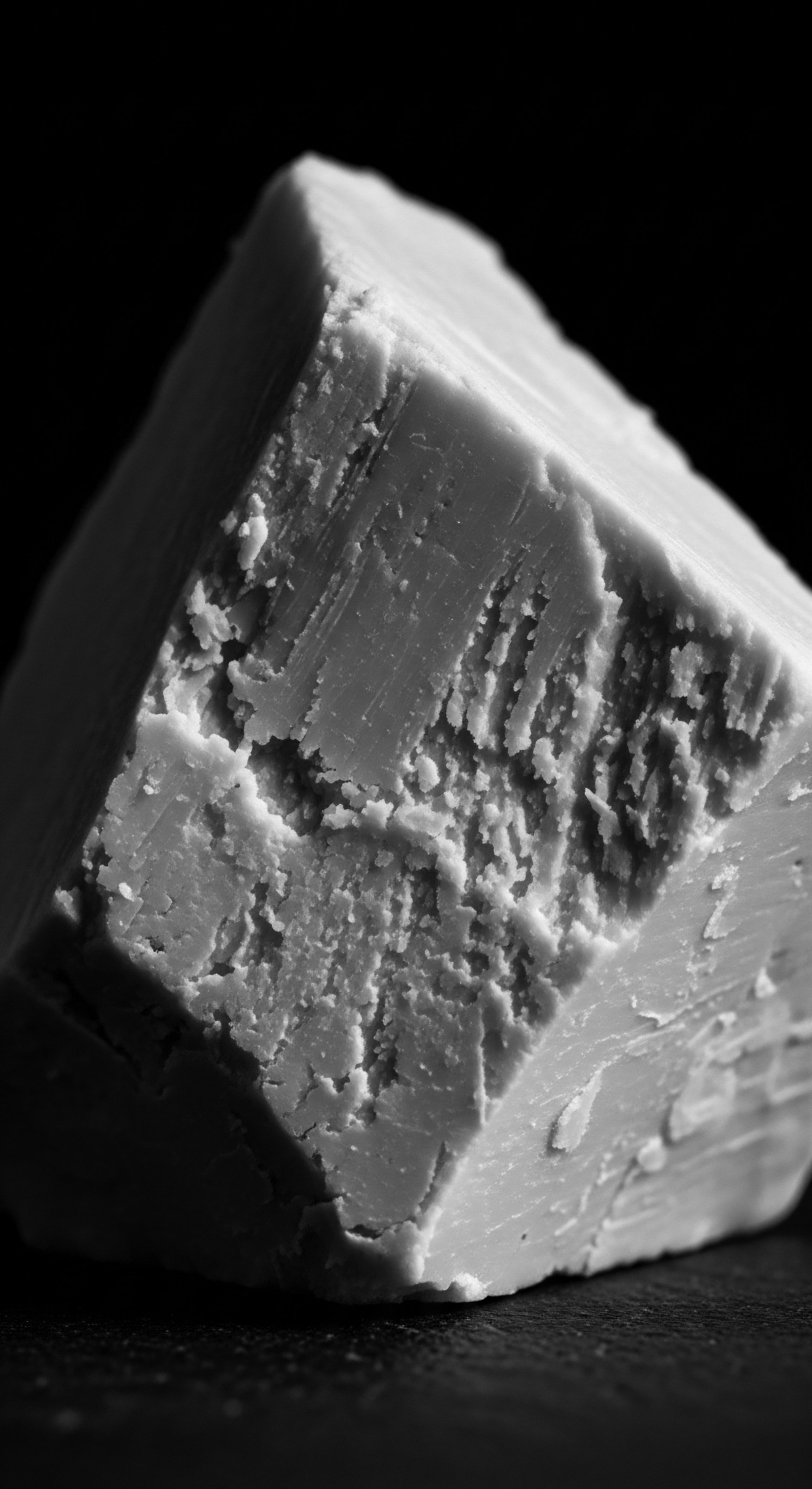
How Do Traditional Protective Styles Preserve Hair Health?
The ancestral roots of protective styles offer profound lessons for contemporary practices. Consider the enduring cornrow, a style that dates back millennia, evident in ancient Egyptian carvings and depictions from the Nok civilization in West Africa. Cornrows, or “canerows” as they are known in some Caribbean communities, involve braiding hair very close to the scalp in raised rows.
This technique minimizes daily manipulation, reduces tangling, and shields the delicate ends of the hair, thereby preventing breakage and promoting length retention. Modern stylists replicate these techniques, often adding extensions for volume or length, but the fundamental principle of protection remains unchanged.
Beyond cornrows, styles like box braids, twists, and Bantu knots also have deep historical antecedents. Bantu knots, for instance, are believed to originate from the Zulu people of Southern Africa and were historically worn by both men and women, signifying various social roles. Today, they are a popular method for achieving heatless curls or as a protective style in themselves. The careful sectioning, twisting, and securing of the hair, a practice passed down through generations, exemplifies a sophisticated understanding of how to manage and preserve textured strands.
Ancestral protective styles, born of necessity and cultural expression, laid the foundation for modern hair health strategies.
The natural styling and definition techniques we cherish today also bear the indelible mark of traditional methods. Techniques like finger coiling, often seen as a modern approach to curl definition, mirror the meticulous hand-styling used by ancestors to clump and define their natural curl patterns. Similarly, the use of natural ingredients—shea butter, various plant oils, and herbal infusions—to condition and add luster to hair has been a constant across centuries.
These traditional methods, refined through observation and communal knowledge, focused on working with the hair’s inherent texture, rather than against it. The reverence for the hair’s natural state, a powerful aspect of ancestral wisdom, guides many contemporary natural hair movements.
The complete textured hair toolkit, both then and now, speaks volumes about intentional care. While modern toolkits boast advanced diffusers and ergonomic brushes, ancestral toolkits were equally specialized. Combs crafted from wood or bone, designed with wide teeth to gently detangle coiled hair, were commonplace.
Adornments like cowrie shells, beads, and gold were not merely decorative but often served to secure styles, signifying status or spiritual connection. The tools, much like the techniques, were extensions of a profound respect for hair as a living crown.
- Wide-Toothed Combs ❉ Historically carved from natural materials, these were essential for gentle detangling, preventing breakage in fragile coiled strands.
- Gourds and Clay Pots ❉ Used for mixing and storing natural concoctions of oils, herbs, and butters for hair conditioning and cleansing.
- Adornments ❉ Beads, shells, and metal rings not only decorated but often helped to secure and weigh down braids and twists, maintaining style integrity.

Relay
How does the wisdom of ancient hair practices, passed down through the ages, continue to shape the very fiber of modern textured hair care, particularly in its most intricate and personalized forms? This question invites a deeper contemplation, a journey into the convergence of elemental biology, cultural resilience, and contemporary understanding. It is within this relay of knowledge—from ancestral hands to scientific inquiry, from communal ritual to individual regimen—that the profound significance of textured hair heritage truly comes into view. The care of textured hair is not a fleeting trend; it is a continuous conversation with history, a living testament to ingenuity and enduring beauty.
Building personalized textured hair regimens today draws directly from the holistic approach ingrained in ancestral wisdom. Our forebears did not simply apply a product; they engaged in a comprehensive system of care that considered diet, environment, and spiritual well-being alongside external applications. For example, the use of specific plant oils and butters was often tied to regional availability and the known properties of those botanicals. In West Africa, shea butter, derived from the nuts of the shea tree (Vitellaria paradoxa), has been used for centuries not only as a skin moisturizer but also as a deeply conditioning agent for hair, prized for its ability to seal in moisture and protect strands from harsh elements (Agbahoungba, 2018).
Modern regimens often feature products with shea butter as a primary ingredient, validating this ancient knowledge through scientific analysis of its fatty acid profile and emollient properties. This is a direct echo of how ancient communities formulated their care, albeit without the chemical nomenclature.
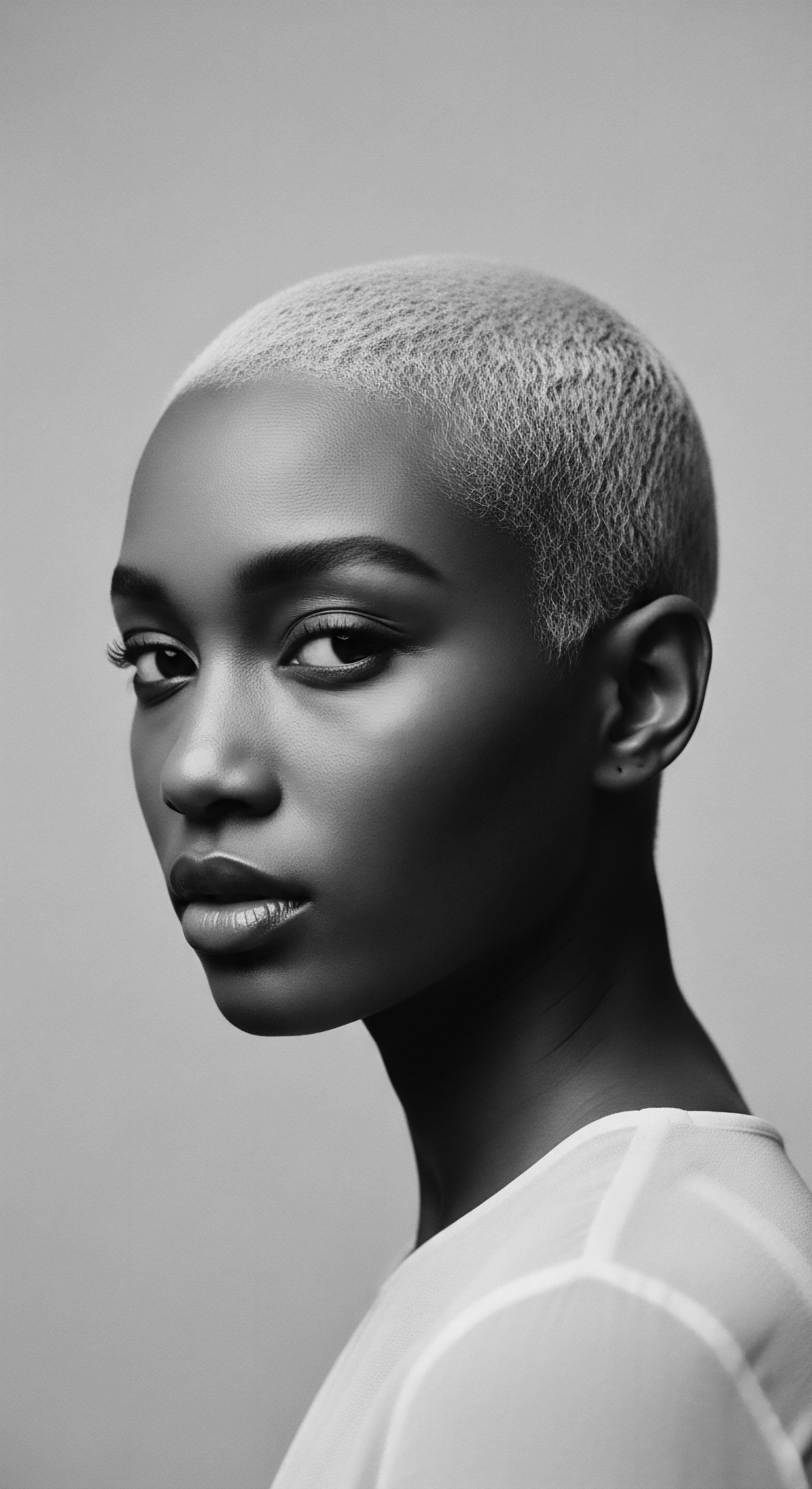
What Traditional Nighttime Rituals Shielded Textured Hair?
The nighttime sanctuary, with its emphasis on sleep protection, is perhaps one of the most direct and poignant inheritances from ancestral hair practices. The wisdom of covering hair at night, particularly with materials that reduce friction, is not a new concept. Across various African and diasporic communities, women and men historically used wraps, head ties, or bonnets crafted from smooth, natural fibers to protect their elaborate hairstyles and preserve moisture. This practice prevented tangling, minimized breakage, and extended the life of intricate styles, which often took hours to create.
The modern satin or silk bonnet, a ubiquitous accessory for those with textured hair, is a direct descendant of these ancestral head coverings. It performs the same vital function ❉ creating a smooth, low-friction environment that prevents the cuticle from roughening against coarse pillowcases, thereby reducing frizz and maintaining hydration. This simple yet profound ritual safeguards the integrity of the hair strand, a testament to the timeless understanding of its delicate nature.
The contemporary bonnet, a silent guardian of textured strands, carries the enduring legacy of ancestral nighttime hair protection.
Ingredient deep dives for textured hair needs frequently reveal a reliance on botanicals and natural substances that have been central to ancestral care for millennia. Consider the use of rhassoul clay, originating from the Atlas Mountains of Morocco. For centuries, this mineral-rich clay has been employed as a gentle cleanser and conditioner, revered for its ability to absorb impurities without stripping the hair of its natural oils. Its efficacy, now understood through its cation exchange capacity and mineral composition, was recognized through empirical observation by generations past.
Similarly, aloe vera, a succulent plant found across various tropical and subtropical regions, has been used for its soothing and moisturizing properties on both scalp and hair in numerous traditional healing systems. The polysaccharides and glycoproteins in aloe vera, which provide its hydrating and anti-inflammatory benefits, were unknown to ancestral practitioners, yet its beneficial effects were well-documented through lived experience and passed down through oral tradition.
The problem-solving compendium for textured hair, from dryness to breakage, also finds its parallels in ancestral remedies. When confronted with issues like hair loss or scalp irritation, traditional healers would turn to specific herbs, oils, and poultices, often drawing from ethnobotanical knowledge unique to their region. For instance, fenugreek seeds, used in Ayurvedic traditions, were employed to stimulate hair growth and condition the scalp, a practice now supported by studies indicating its potential anti-inflammatory and hair growth-promoting compounds (Waris, 2019). The emphasis was always on restoration and balance, viewing hair issues not in isolation but as symptoms of a broader imbalance within the body or in relation to environmental factors.
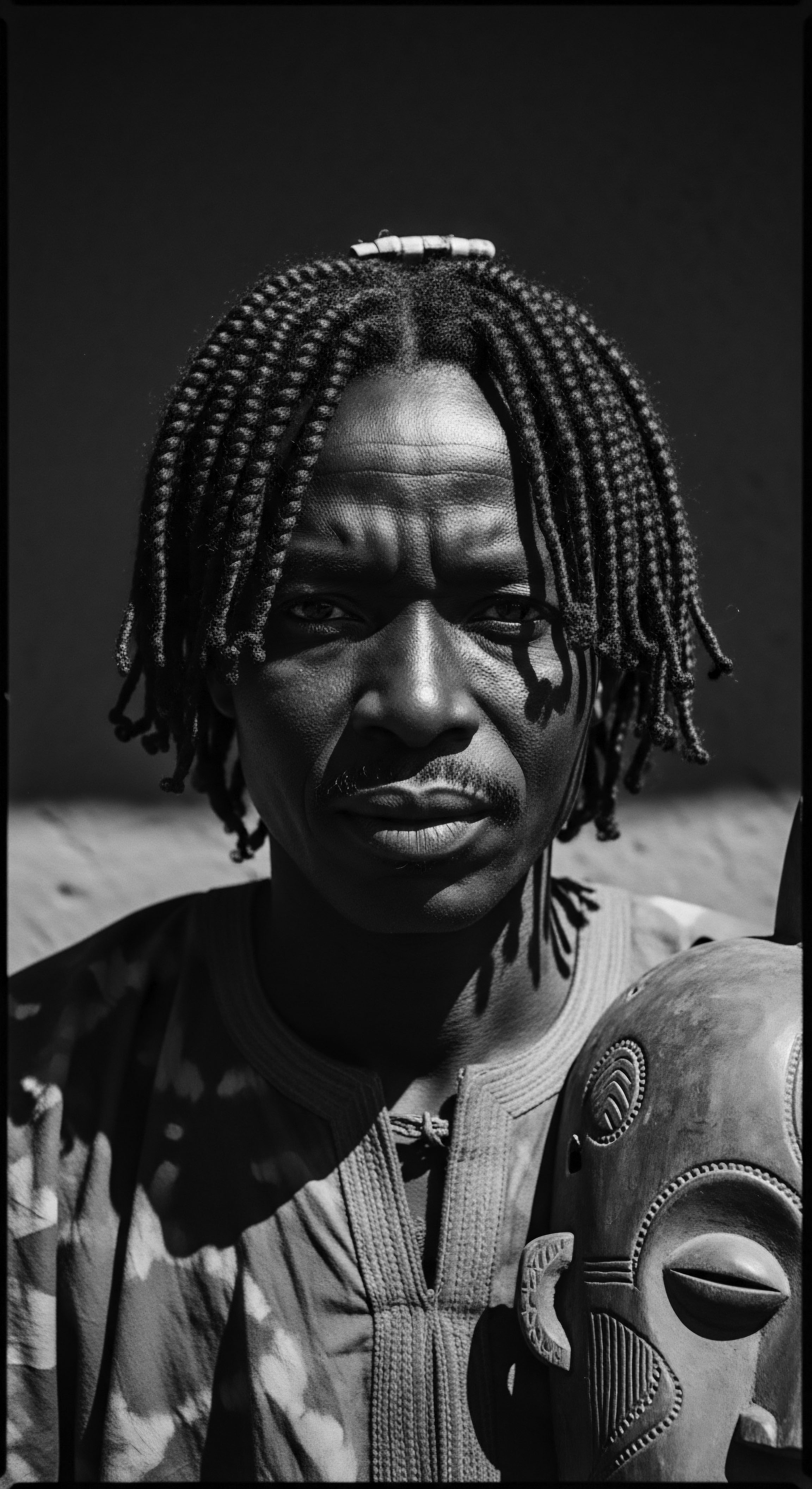
How Does Ancestral Dietary Wisdom Impact Hair Health?
Holistic influences on hair health, deeply embedded in ancestral wellness philosophies, offer a profound framework for modern care. Ancestral communities understood that true radiance emanated from within. Diets rich in whole, unprocessed foods, often plant-based and seasonally appropriate, provided the necessary vitamins, minerals, and proteins for robust hair growth. For example, traditional diets in many African societies often included nutrient-dense leafy greens, legumes, and root vegetables, providing essential micronutrients like iron, zinc, and B vitamins, all crucial for healthy hair follicles.
The communal sharing of food and knowledge reinforced these healthy practices, ensuring that the entire community benefited from this integrated approach to well-being. This ancestral perspective challenges the modern tendency to view hair care as solely an external application, urging a return to nourishing the body as a whole to achieve optimal hair vitality.
| Common Hair Challenge Dryness and lack of luster |
| Ancestral Practice/Remedy Application of shea butter, coconut oil, or palm oil; frequent water rinses. |
| Modern Parallel/Scientific Validation Moisturizing creams and oils with emollients; deep conditioning treatments; humectants. |
| Common Hair Challenge Breakage and fragility |
| Ancestral Practice/Remedy Protective styles (braids, twists); gentle detangling with wide-toothed tools. |
| Modern Parallel/Scientific Validation Low-manipulation styling; protein treatments; leave-in conditioners; ergonomic combs. |
| Common Hair Challenge Scalp irritation or flaking |
| Ancestral Practice/Remedy Herbal infusions (e.g. neem, aloe vera); clay masks for cleansing. |
| Modern Parallel/Scientific Validation Anti-inflammatory shampoos; scalp serums with soothing botanical extracts; clarifying treatments. |
| Common Hair Challenge The enduring effectiveness of ancestral hair remedies often finds contemporary validation in modern scientific understanding of hair and scalp physiology. |
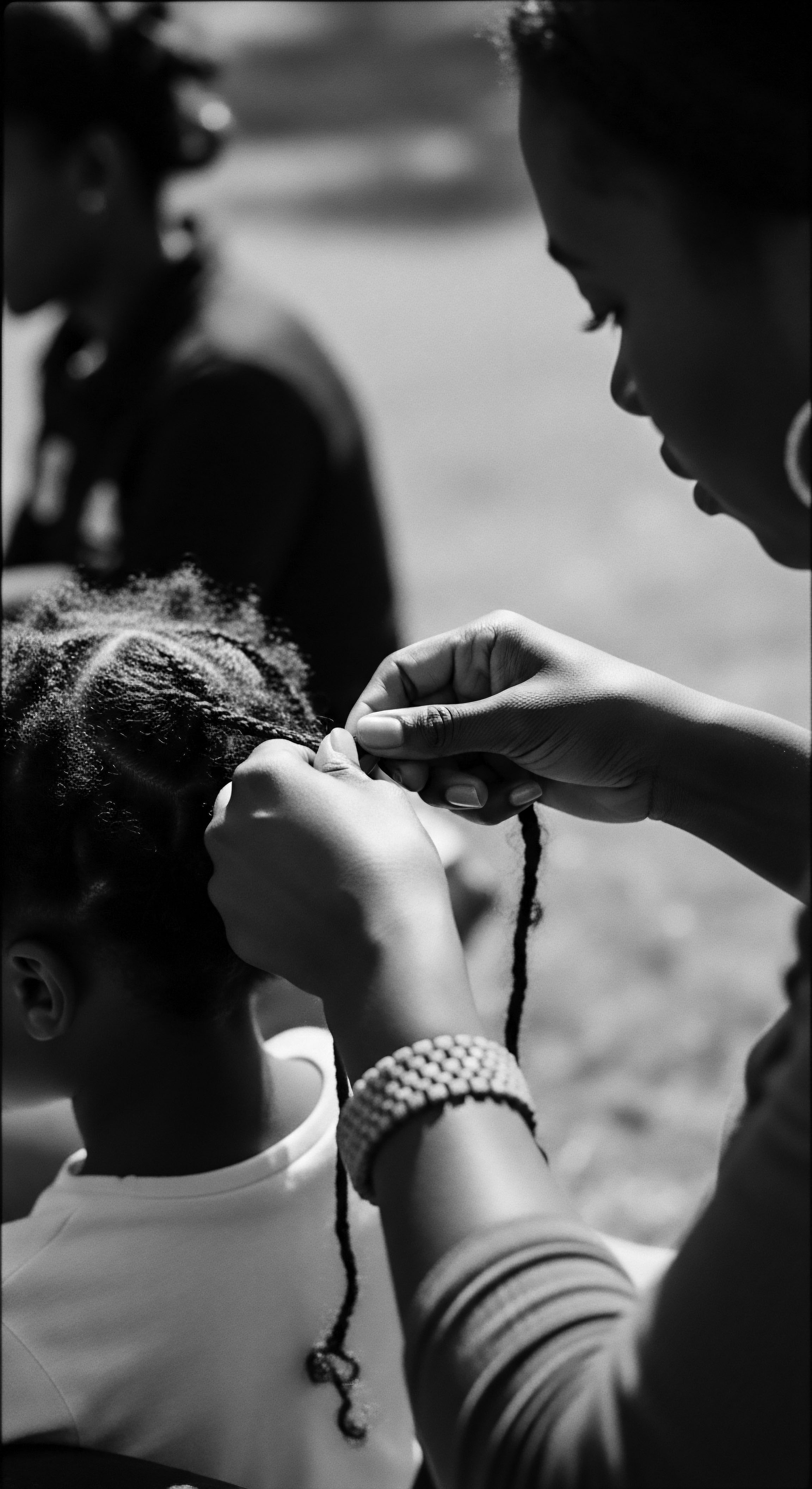
Reflection
The journey through ancestral hair practices, their profound influence on modern textured hair care, is a continuous unveiling of heritage. It is a recognition that every strand holds a memory, a lineage of resilience, beauty, and ingenious adaptation. The Soul of a Strand, then, is not merely a poetic notion; it is the living archive of these practices, the enduring spirit that connects us to those who came before. As we move forward, armed with both ancient wisdom and contemporary understanding, we are not simply caring for hair; we are honoring a legacy, reaffirming identity, and shaping a future where the crowning glory of textured hair is celebrated in all its magnificent forms, perpetually unbound by historical narratives of subjugation, instead finding its true place as a symbol of strength and continuity.
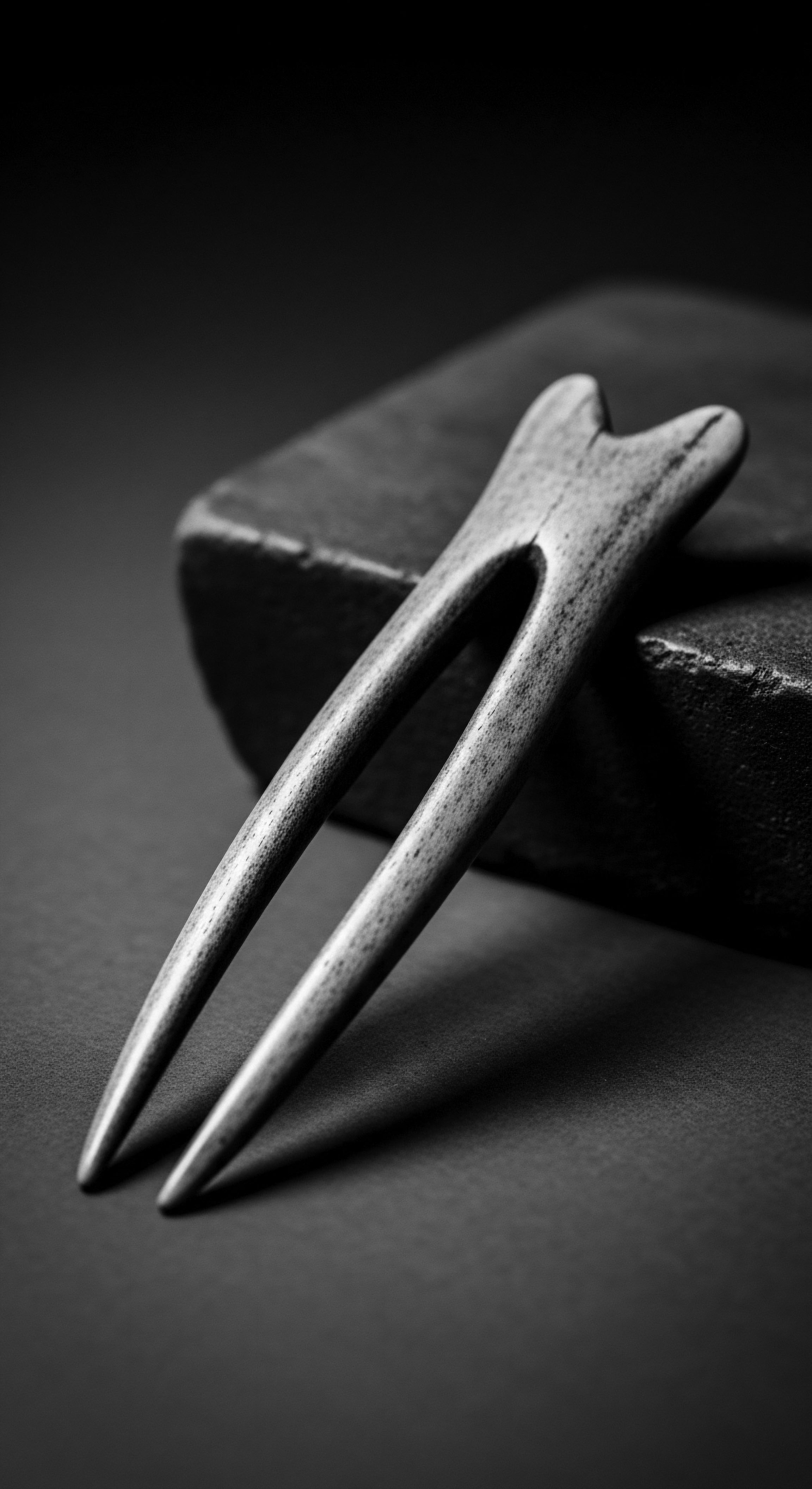
References
- Agbahoungba, S. (2018). Shea Butter ❉ A Comprehensive Guide to Its Uses and Benefits. University of Ghana Press.
- Waris, S. (2019). The Medicinal Properties of Fenugreek ❉ A Review. Journal of Herbal Medicine Research, 9(2), 112-125.
- Opoku, R. A. (2015). African Hair ❉ Its Cultural and Spiritual Significance. Sankofa Publishing.
- Patel, S. (2017). Hair Care and Culture ❉ A Global Perspective. Academic Press.
- Cole, S. (2009). Hair Story ❉ Untangling the Roots of Black Hair in America. St. Martin’s Press.
- Byrd, A. D. & Tharps, L. (2014). Hair Story ❉ The Definitive Issue. St. Martin’s Press.
- Khumalo, N. P. & Gumedze, F. (2012). The Hair Atlas ❉ A Global Guide to Hair Morphology and Care. Springer.
